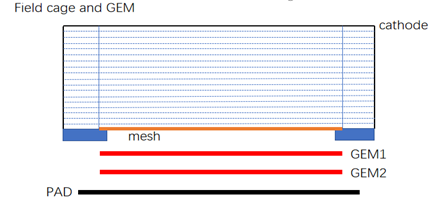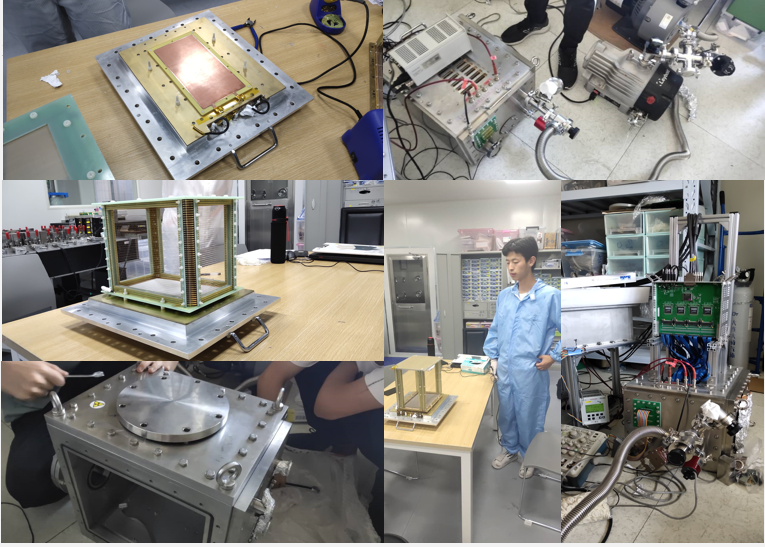During 26-July-2020 to 28-August-2020 I was in the group of Institute of Modern Physics, Chinese Academy of Sciences working on several tasks in experimental nuclear astrophysics. The group is under the supervision of Prof. Xiaodong Tang, Prof. Ningtao Zhang and Prof. Kuoang LI.
Task1
Use Mathematica package to calculate the cross sections of nuclear fusion in star core and compare them with experimental results. We found some mistakes in current models determining the cross sections of Beta-Decay in (Fe), since they incorrectly calculated the electron energy.
Task2
Modulate and test the TPC (Time Projection Chamber) produced by the labs in Institute of Modern Physics, Chinese Academy of Sciences.
Now I simply explain how TPC works:
The electric field formed between the copper wires can make the drift electric field more uniform. As shown in the pictures below:


Working gas is quenching gas because of 2 reasons:
First, the combination of positive ions and electrons as well as de-excited gas molecules can produce high energy photons. As a result, high-energy photons would directly ionize gas molecules and they may also hit the metal plate to generate electrons, which will affect the measurement of location data. Thus, we need to use polyatomic molecules absorb photons through vibrational energy level absorption and non-radiative transitions, which can significantly reduce the effects of photons.
Moreover, due to the Penning effect, the metastable excited atoms that exist in the main gas for a long time collide with the added gas to ionize the added gas. Therefore, the energy gain will be higher.
Device assembly process:

Knowledge Acquire
- The knowledge about connection between nuclear physics and astrophysics and how to implement experiments to explain celestial phenomenas.
- TPC structure and the assembly and usage of TPC to measure the decay process.
- CERN root data processing, and getting further interested in other big data processing methods in astrophysics.